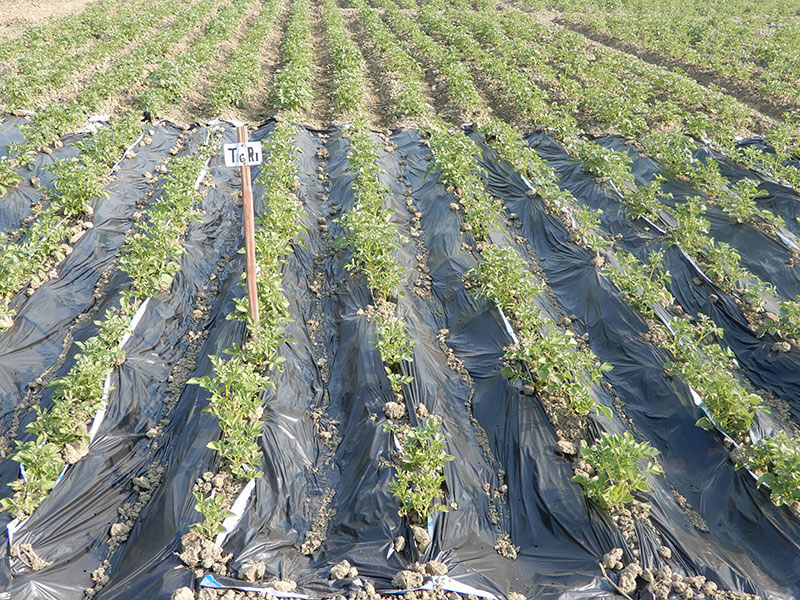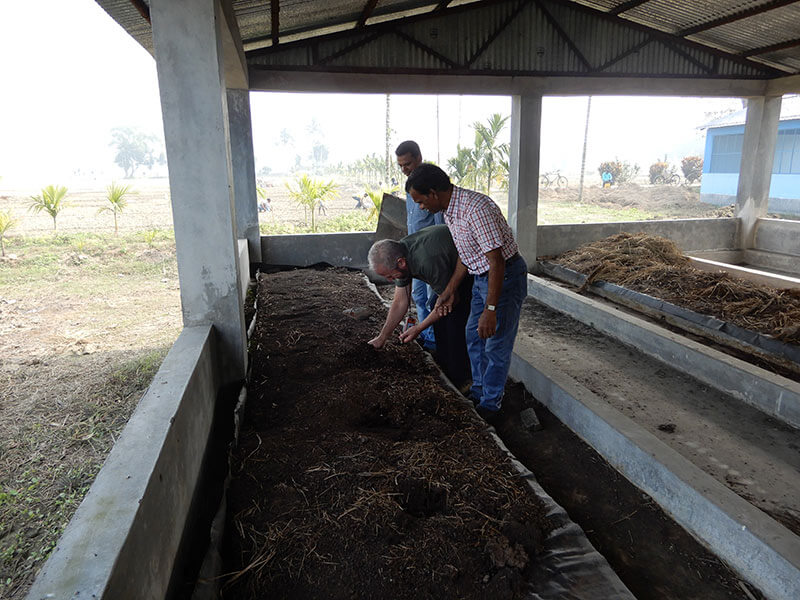RRSS : Chakdah
Contact Us
Regional Research Sub Station
Uttar Panchpota, Chakdah,
Nadia -741222
Mobile no : 9051339658/8777726869
E-mail : This email address is being protected from spambots. You need JavaScript enabled to view it.
In- charge
Dr. Sukanta Pal, Professor, Agronomy
Location :
RRSS, Chakdah is situated between 20.50°-24.50° N Latitude and 86.0° 89.0° E Longitude with a mean sea level rise of 9.75 m.
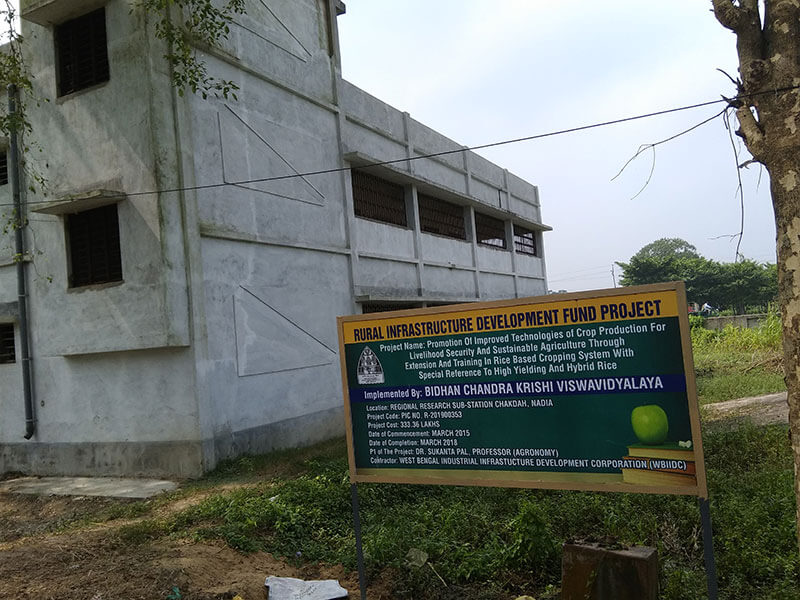 RRSS Chakdah Research building constructed under RIDF scheme
RRSS Chakdah Research building constructed under RIDF scheme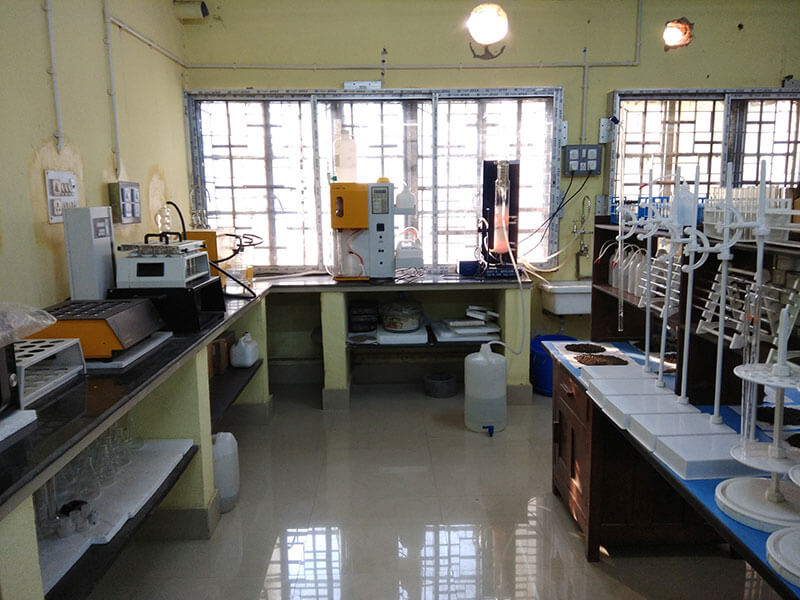 Nitrogen Analyser at the Laboratory
Nitrogen Analyser at the Laboratory- Experimrnt of mulching on Potato at RRSS Chakdah
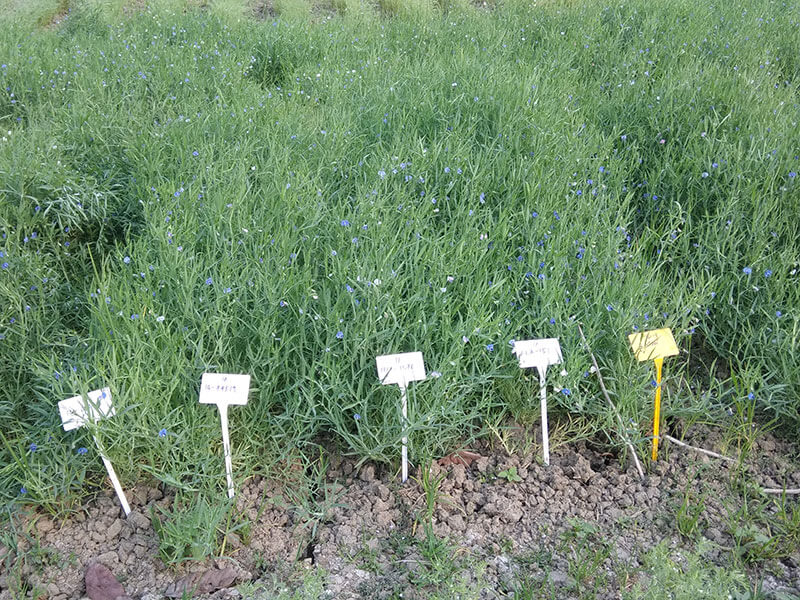 Screening of Lathyrus genotypes for better yield at RRSS Chakdah
Screening of Lathyrus genotypes for better yield at RRSS Chakdah- Vermicompost pit at RRSS Chakdah
- Experiment is on Rice field at RRSS Chakdah
Some activity of RRSS Chakdaha
Crop Improvement
Rice:
- Evaluation and maintenance of rice germplasm: RRSS Chakdah centre is maintaining 60 short grain aromatic land races including black rice collected from NEH region of the country as well as 50 deep water and salinity tolerant rice genotypes which already been characterized regarding yield as well as grain quality cooking quality traits and other biochemical traits like total phenolics, anthocyanin and antioxidant.
- Identification of sequence variations among glutinous and non-glutinous cultivars of Rice (Published in Cereal Research Communication, 2022 https://doi.org/10.1007/s42976-021-00231-4): Rice genotypes with various ranges of apparent amylose content (AAC) as well as amylopectin have been characterized. Sequence variation was detected among the landraces concerning granule bound starch synthase allele (GBSS) which could be effectively utilized for marker assisted breeding programme.
- Evaluation of Advance breeding trials of rice in coordinated and adaptive trials: CHR 16 (IC No. – 05899120)/IET 22613 was nominated in NSASN in saline and alkaline condition. It is promoted to AL & ISTVT and CSTVT kharif 2012. CHR 16/ IET 22613 may be recommended for cultivation at the coastal areas of West Bengal. CHR 3 (IC 575542/IET 22779 was nominated in IVT – BT (Initial variety trial- Basmati) during 2011 and surpassed the check variety Pusa Basmati 1 by a margin of 30 %. Other promising line developed are CHR 17 (IC - 0589913)/ IET 22429, CHR 10 (IC - 0589906)/ IET 1206, CHR 6 (IC No. 575545)/ IET 22841 etc.
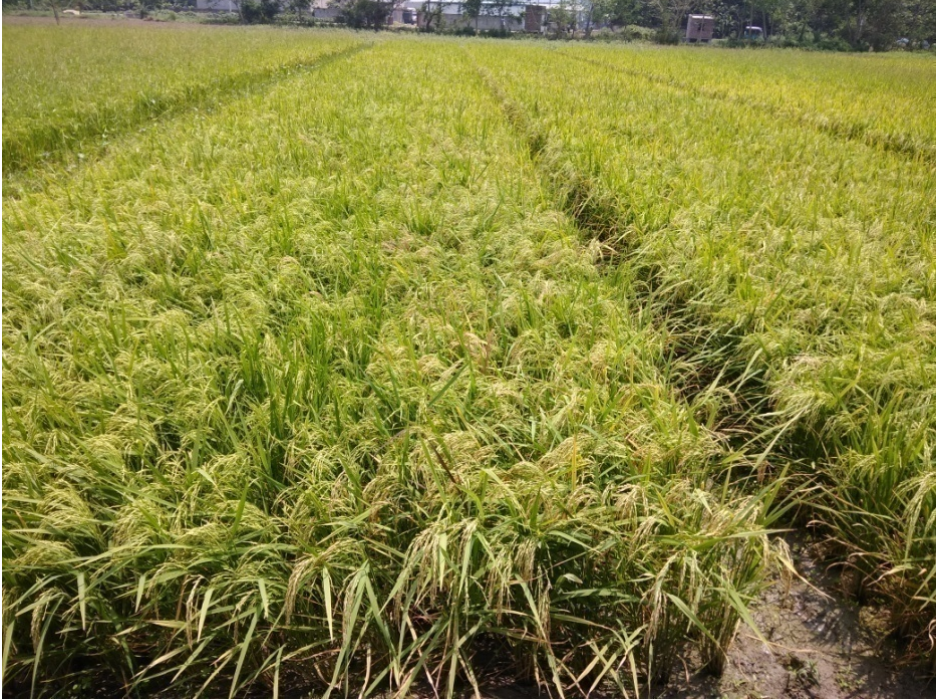
Fig. 1: Evaluation of promising entries of rice at RRSS, Chakdah
Lentil:
- Evaluation and maintenance of lentil genotypes: RRSS, Chakdah centre grown and evaluated 550 indigenous and exotic accessions of lentil regarding suitability to rice fallow ecology, collar rot resistance etc
- Evaluation for grain micronutrient content in lentil: Micronutrient malnutrition is a great burden towards attaining nutritional security for the vulnerable section of the society, especially pregnant and lactating women and preschool children in developing countries. A study was contemplated to determine the genetic variability for Fe and Zn content among 150 diverse lentil genotypes followed by unravelling the effect of genotype × environment interaction for delineation of stable micronutrient rich genotypes in lentil using HA-GGE biplot method.
- Assessment of microbial population dynamics in selected lentil genotypes under rice fallow ecology (Published in International Journal of Molecular Science, 2021, 8895; doi:10.3390/ijms21238895): The cultivar specific soil microbial communities with respect to their taxonomic structure and specific function have not been investigated explicitly in improving the adaptation of lentil cultivars under rice-fallow ecology. Study was carried out to decipher the rhizosphere microbiome assembly of two lentil cultivars under rice- fallow ecology for discerning the diversity of microbial communities and predicting the function of the microbiome genes towards related to nitrogen (N) and phosphorus (P) cycling processes deploying high-throughput whole (meta) genome sequencing. Comparison of the Metagenome profiles of two cultivars detected variable microbiome composition with discrete metabolic activity. This study warrants comprehensive research for explaining the role of microbiome diversity and cultivar-microbe interactions towards stimulating microbiome derived soil reactions regarding nutrient availability under rice- fallow ecology.
- Evaluation of Advance breeding trials of lentil in coordinated and adaptive trials: One entry of lentil (BLS-1707-09) was submitted during 2018-19 and two entries of lentil (BLS-20-1 and BLS-20-2) have been submitted for evaluation under national trial for screening nursery of acidic condition and aluminium stress during 2019-20. Two lentil entries namely BCL-1032 and BCL-10212 have been submitted under National trial for small seed category during 2020-21. One lentil entry viz., BCL-1030 has been submitted for testing under National evaluation trial for rice fallow situation during 2020-21.
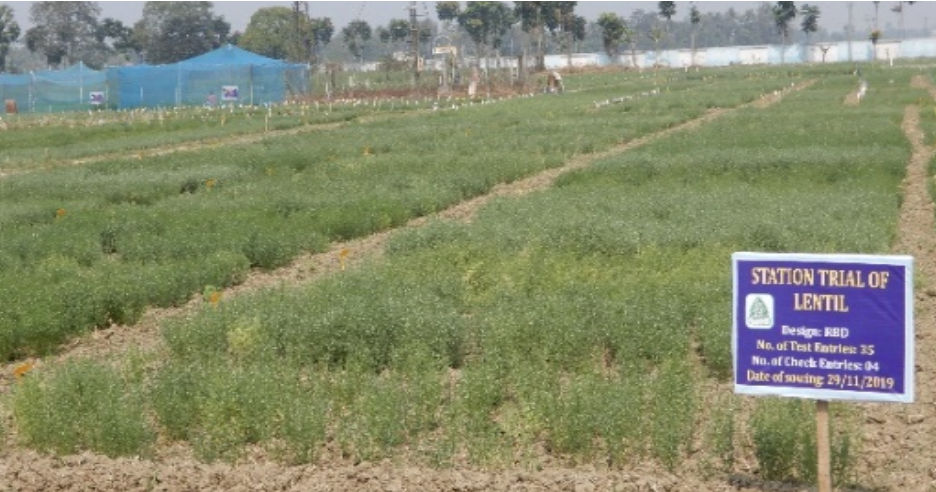
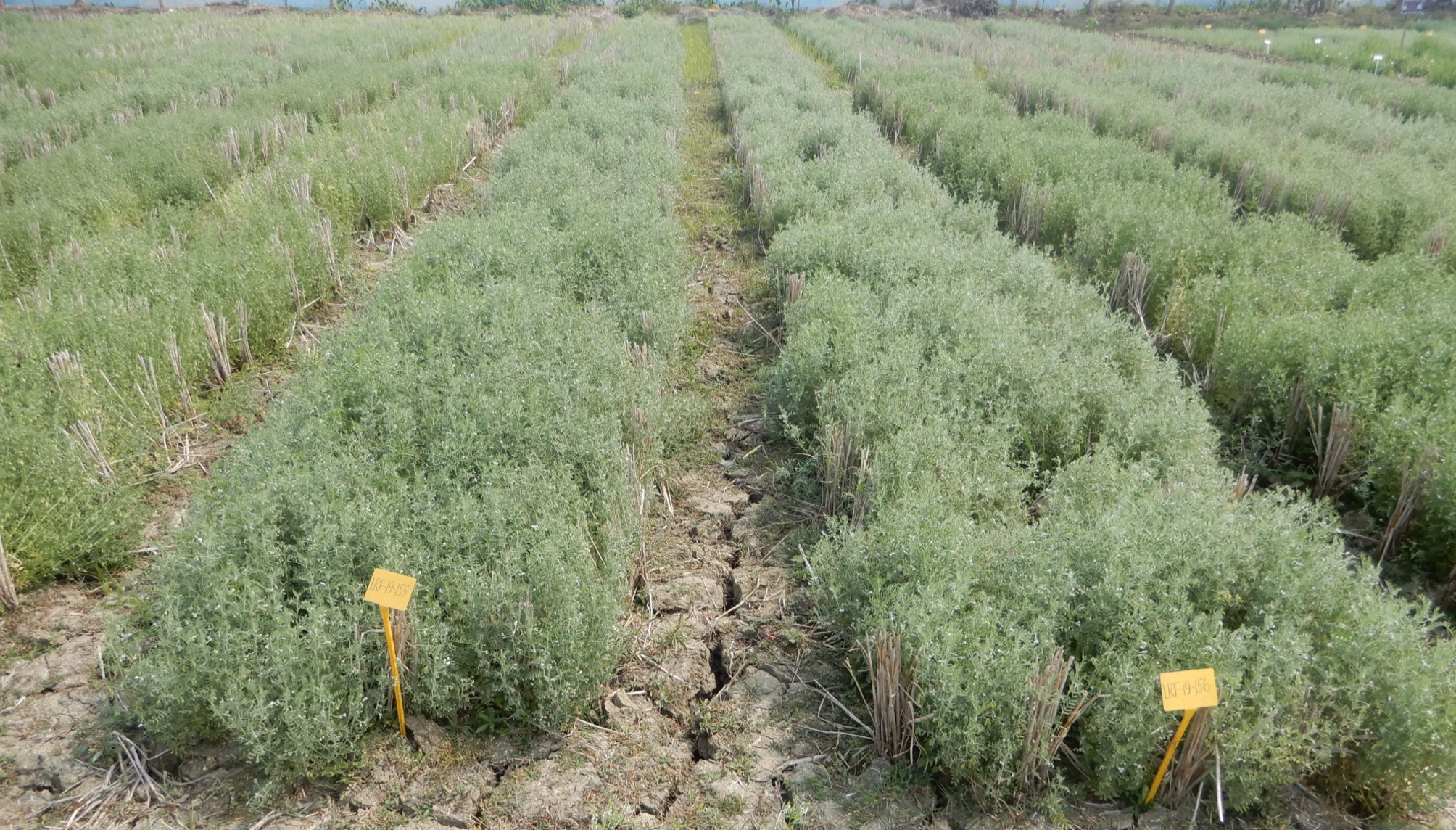
Fig. 2: Evaluation and Maintenance of lentil germplasm
Grasspea:
- RRSS, Chakdah centre grown and evaluated 200 indigenous and exotic accessions of lathyrus regarding high biomass and low ODAP. Genotypes with ODAP content <0.06 % have been identified through LCMS
- Germplasm Exploration programme in grass pea: Germplasm exploration programme in grass pea was conducted in collaboration with NBPGR during 2019-20. Coastal region (Purba Medinipore) tribal belt of Paschim Medinapore and flood prone areas of Ganga basin covering Murshidabad districts were the exploration site.
- Evaluation of Advance breeding trials of grasspea in coordinated and adaptive trials: Two low ODAP lathyrus entries namely BCK-19-13 and BCK-19-21 have been submitted under National trial for testing during winter season
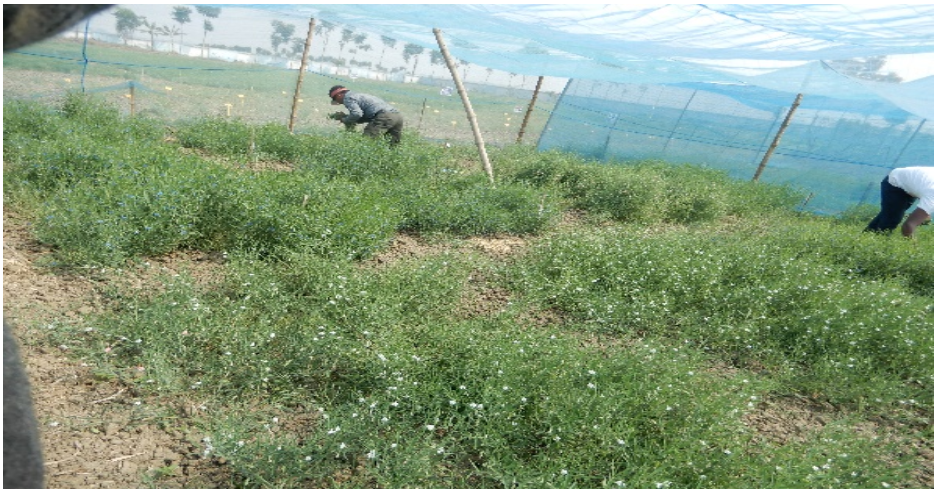
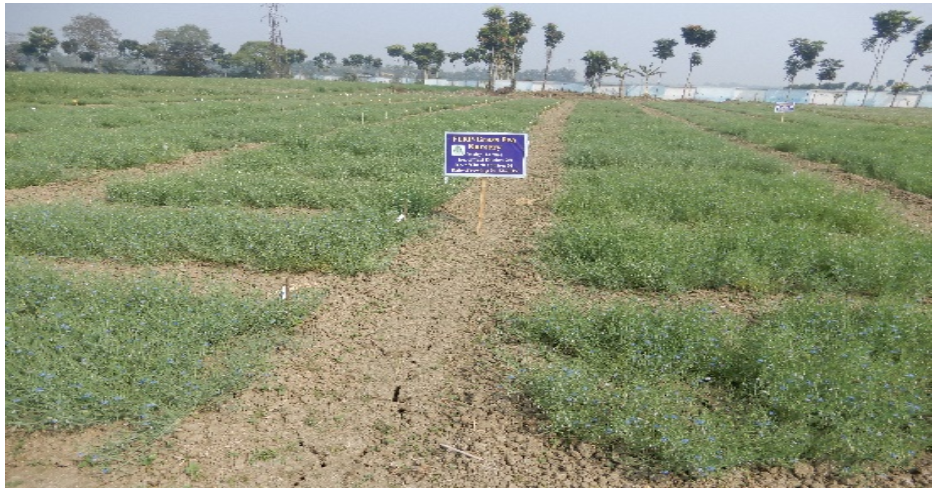
Fig. 3: Evaluation and Maintenance of grasspea germplasm
Mungbean:
- Germplasm maintenance and evaluation: Maintained and evaluated more than 207 mungbean germplasm for preharvest sprouting tolerance, pod shattering tolerance along with yield attributing traits. Evaluation for grain Fe and Zn content of these germplasm set is under progress.
- Evaluation of Advance breeding trials of mungbean in coordinated and adaptive trials: Two entries of mungbean (BCM-18-1 and BCM-18-2) were submitted during 2019-20 kharif season. Two mungbean entries namely MHBC-20-7 and MHBC-20-3 have been submitted under National trial for testing during spring and summer season respectively during 2020-21. Four mungbean BCM-20-1 and BCM-20-6 have been submitted for testing under spring season during 2021-22 and MHBC-20-8 and MHBC-20-14 have been submitted for testing during summer season of 2021-22. BCM-18-1 has been tested for confirmation of its suitability for cultivation in the state of West Bengal at different locations viz., South 24, Parganas, North 24 Parganas, Bankura, Purba Medinipore and Murshidabad districts. Presently, this entry is tested under National testing programme of mungbean under the aegis of AICRP on MULLARP in six locations of North Eastern Plain Zone under AVT-I trial of kharif, 2021.
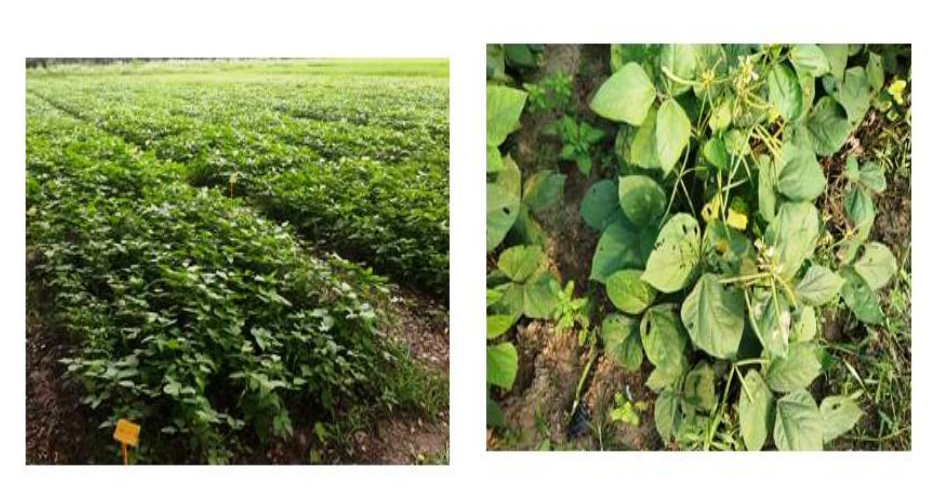
Fig. 4: Evaluation and Maintenance of mungbean germplasm
Urdbean:
- Germplasm maintenance and evaluation: Maintained and evaluated 117 urdbean germplasm for yield attributing traits.
- Evaluation of Advance breeding trials of urdbean in coordinated and adaptive trials: One entry of urdbean (PBU-18-1) developed in collaboration between GB Pant University of Agriculture & Technology, Pantnagar and BCKV, Mohanpur was submitted during 2019-20 kharif season. Two urdbean entries namely PBU-20-4 and BCU-20-5 have been submitted under National trial for testing during spring season of 2020-21. Another two urdbean entries BCU-20-62 and BCU-20-73 have been submitted under National trial for testing during spring season of 2021-22. Urdbean entry (PBU-18-1) has been promoted to AVT-I trial of kharif, 2021under the aegis of AICRP on MULLARP in six locations of North Eastern Plain Zone.
Crop Management
- 100% recommended dose of inorganic fertilizer in combination with 3.75 ton/ha ecovio compost (Municipal compost) showed best performance on yield and yield attributing character of var. Satabdi (IET 4786).
- SSNM (Site specific nutrient management) based nutrient expert showed best performance over all other treatments and produce grain yield of 4.85 t/ha in the variety satabdi.
- Hand weeding twice at 20 and 40 DAT effectively control all categories of weeds and recorded maximum grain yield (3.29 t/ ha) in rice, it was statistically at par with the Almix 20% WP (T8) treatment which was an effective treatment in respect of all types of weed population, biomass production and weed control efficiency throughout the observation period and resulted in about 42.10% yield increment of rice over control without showing any phytotoxicity on plants. Based on overall performance, we could be suggested that the application of Almix 20% WP @ 4g a.i. /ha exploit not only better weed management but also improves the yield of rice.

- Three crops tested in two consecutive seasons (Potato, Okra and rice) with the application of Municipal compost, other compost along with inorganic fertilizers with seven treatments combinations. The compost prepared from source segregated municipal biowastes collected in ecovio certified degradable bags has proved its tremendous potential for use in the kharif rice. It can be recommended that efficient use of municipal compost with chemical fertilizers not only increase the growth and yield attributes of different crops but it also improves the physico-chemical properties of soil and pollute free of our environment.
Crop protection
- Studies on the incidence, biology and extent of damage of rice yellow stem borer (Scirpophaga incertulas) of rice:
Seasonal Incidence: Studies on population fluctuation of rice yellow stem borer Scirpophaga incertulas (Walk.) at RRSS, Chakdaha for both boro (Summer) and Kharif (Rainy) rice found five different peaks. The study also showed that larval population were maximum with 9/ mt2 in the month of April followed by 7 / mt2 during boro (summer) whereas the number of larva never exceeds above 5 / mt2 during kharif (rainy) season. The insect went to hibernation during December and again it appeared with very low population.
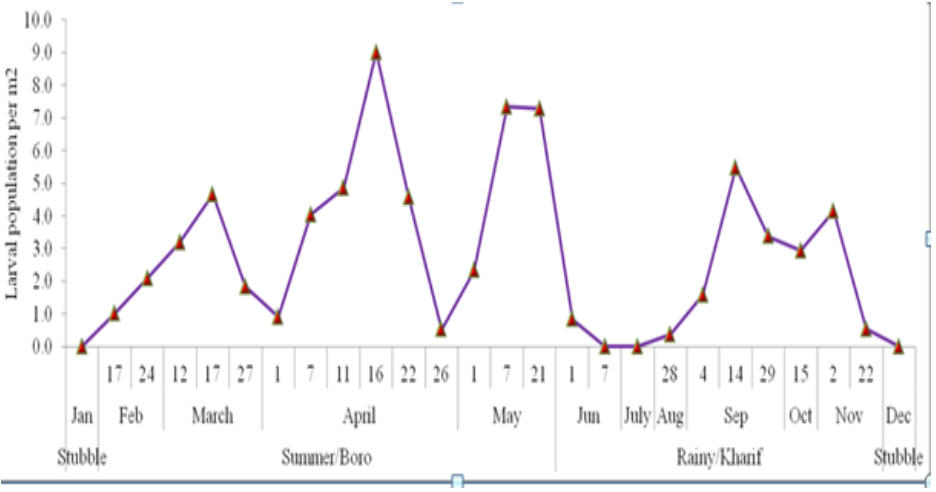
Fig. 5: Seasonal incidence of rice yellow stemborer Scirpophaga incertulas
Walk. at RRSS, Chakdaha, BCKV
Biology: Female moth lays about 100 to 200 eggs in a cluster on the tip of the rice leaves which is covered by yellowish hairs. The larva hatch in about a week and the young larvae initially feed about the tender leaves. The full grown larva is pale yellow with orange head and dark brown prothoracic shield (. Fully matured larva is about 2.5 cm long 0.6 cm wide. The larval duration also varied with availability of food. In some cases, the length becomes shorter when insect attacked an unhealthy plant. On an average 25 days are required for completing the larval development but some time it exceeded 30 days in late maturing crop. In low lying areas the insect was found to hibernate in larval stage inside stubble.
Freshly hatched larvae are negatively geotropic, gregarious and crawl towards the tip of the leaf for dispersal. Most of the larvae were suspended by silken thread and swung with it to reach the adjacent hills. The relatively weaker larvae again crawled down towards the base of plant where the surface of leaf sheath and bored at the nodal region to get inside the stem. They pass through 5 to 6 instars depending upon the availability of food and suitable temperature for their growth and development.
Extent of damage: The studies on extent of yield loss shows that overall damage % were constantly increased from vegetative to reproductive stage. Here per unit increase of subsequent dead heart and white ear caused yield reduction by 0.8887, 0.3269 and 0.078,0.275 units in kharif and boro season respectively and clipping of Scirpophaga incertulas (Walk.) egg masses could save at least 7.142 and 13.040 % damage in a crop period.
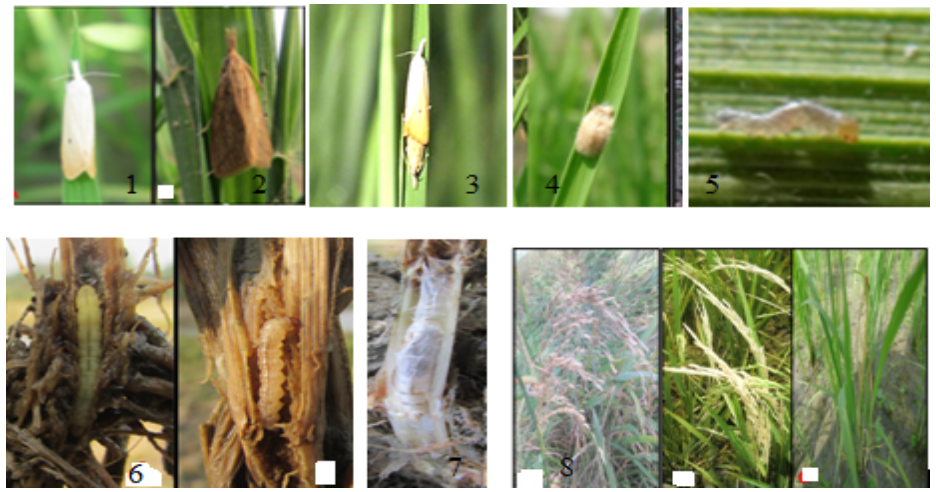
Fig. 6: Different stages(1.Adult female ,2. male, 3 mating position 4.egg mass. 5. young larva, 6 matured larva, 7. pupa ) and 8 damage of rice yellow stem borer
- Mating-disruption technique to prevent rice yellow stem borer Scirpophaga incertulas (Walk.): Here a pheromone mediated tablets were loaded into the groove of the biodegradable plastic hangers are tied to the bamboo stick of 5 m in length. Such sticks were fixed and placed in the transplanted rice field in a 11x11 m matrix at the rate of 80 per hectare at 15 dates after transplanting. The tablet with 3.2 mg of a mixture of Z (11)- hexadecinal and Z (9)-hexadecinal (3:1) with two application and single application of 20mg were found to manage yellow stem borer infestation effectively both at vegetative and reproductive stage of crop.
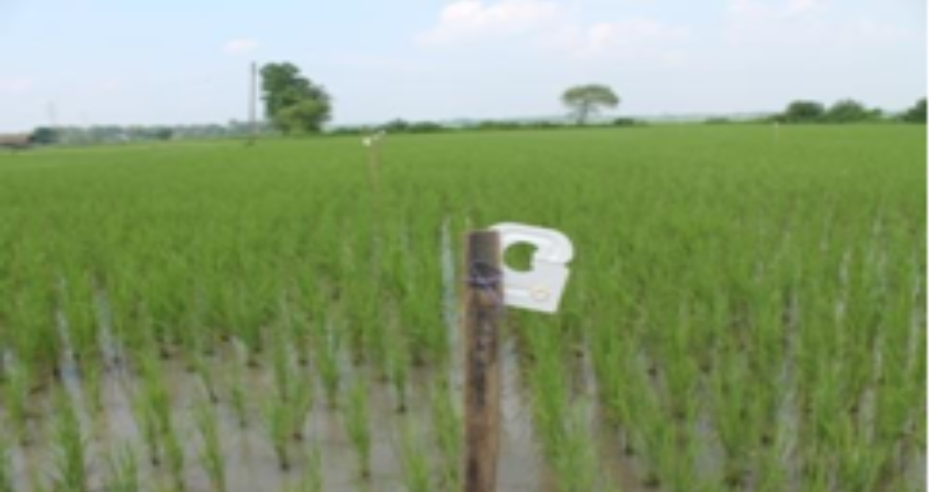
Fig. 7: New technique developed for management yellow stem borer through mating disruption (Collaborative work with United Kingdom)
- Isolation of a new parasitic nematode Hexamermis sp as an potential bioagent of brown planthopper (Nilaparvata lugens Stål and whitebacked planthopper Sogatella furcifera Horv.) in the rice growing tracts of Eastern India (Published in International Journal of Nematology (2008) Vol 18 pp75-78, (2009) Vol 19 pp120 (United Kingdom). This nematode starts to build up its population in the month of September starting with very low population of 3 to 4 per 100 plant hoppers. Two distinct population peaks were observed with population level of 18.52,13.52 and 35.00, 30.00 per 100 BPH and WBPH during first and last week of October respectively. The studies under laboratory condition it was found that both male and female BPH/WBPH were parasitized by Hexamermis sp.The female BPH transformed to ochraceous brown dorsally and brown vertically, whereas males became dark black with whitish dome shaped indentation. The body colour of Hexamermis sp changes with the color of the host insect. The parasitized adult has enlarged abdomen, is sluggish and usually does not take part in reproduction. The studies on host selection during the wet season revealed that Hexamermis sp prefers brachypterous female (60%) followed by allate female (25%) and allate male (20%) but under stressful conditions this ration changed to 20, 50 and 30% respectively. Both insect and nematode populations were higher in lowland and irrigated areas in the wet season which is important for their survival. The nematodes emerging from the abnormal adult are reduced in length. The population of the host insects started to decline with the onset of winter in Eastern India in December and the population of Hexamermis sp also disappeared subsequently. A temperature range of 25 to 30ºC and relative humidity limit 60 to 80% were conductive for population buildup of both BPH/WBPH and Hexamermis sp in rice field

Fig. 8: Parasitic nematode (Hexamermis sp)emerged from Brown Plant Hopper
- Isolation of a new parasitic nematode (Agamermis sp) from brinjal leaf webber(Nephopteryx leucophaella Zell) in Eastern India with special reference to west Bengal (Pub by International Journal of Nematology(2008) Vol 18(2) pp203-206 (United Kingdom). Agamermis sp (Mermithidae: Nematoda) is a nematode parasite of brinjal leaf webber Nephopteryx leucophaella Zell, occurred in red and laterite zone, new alluvial zone, old alluvial zone and terai zone of West Bengal with 2.0 to 15.5%, 1.0 to8.0%, 2.0 to 9.0% and 1.0% parasitization respectively from between July to October during 2004 and 2005. Laterite soil provided the most suitable microclimate and pH (5.4 to 6.6) to build up maximum nematode population (16%) followed by alluvial (9%) and terai soil (2%). In all the agroclimatic zones the population buildup started with the onset of the monsoon in West Bengal which peaked in September and gradually subsided during winter when the insect hibernated.
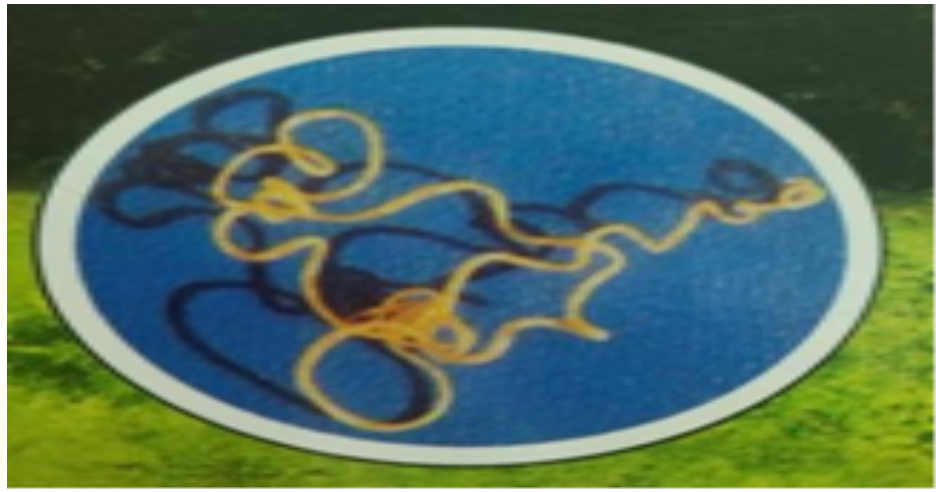
Fig. 9: Isolation of a new parasitic nematode (Agamermis sp) from Brinjal Leaf Webber
- Factors affecting incidence of carabid beetle Ophionea indica (Thun.) in rice field: Studies on factors affecting incidence of carabid beetle Ophionea indica (Thun.) population in rice field during Kharif season indicated that the excessive use of nitrogenous fertilizer showed higher incidence of leaf folder and hopper pests which also led to augment the carabid beetle population in rice field. The results indicated that the predator population was as high as 5.10/m2 in plot treated with higher dosage of nitrogenous fertilizer (120kg /ha) followed by the standard dosage of mixed fertilizer (N:P:K =12:60:60) as 4.33/m2 and lowest in high dosage potassium fertilizer(60kg/ha) as1.77/m2. Significant differences were found in plot receiving higher (60 kg/ha) and lower dosage of phosphate (30 kg/ha) recorded carabid beetle population of 33 and 3.88 respectively. The insect was found to breed inside the holes of a sugarcane left by the borers and shifted to field immediately after transplanting the rice crop.

Fig. 10: Ophionia indica(Thun.) recorded as predator of insect pests of rice crop at RRSS, Chakdaha,BCKV
- Studies the insect predator biodiversity in rice ecosystems of West Bengal (published in Eco. Env &Cons (2016) vol 22 pp 589-594.: A total of 15 predators were observed to predate upon rice pest right from the transplanting to the harvesting of crop. Among the five different orders Ischnura aurora aurora (Brauer) of Zygoptera, Orthetrum sabina sabina (Drury) of Anisoptera, Forficularia decipiens (Gene) of Dermaptera, Andrallus spinidens (Fab.) of Hemiptera, Ophionea nigrofasciata (Schm. and Goe.), Micraspis crocea (Muls.) and Cheilomenes sp of Coleoptera dominating during vegetative to ripening stage of the crop.
- Identification of promising lines showing resistance against Sheath Blight in rice: IET 26082, 25310, 26027 and 24518 showed better resistance than the tolerant check (Tetep) against Sheath Blight (ShB) disease. Some of the other promising entries better than tolerant check were IET-25341, IET-26267, IET-25512, IET-26373 and IET-25998 against ShB disease.
Some achievement/ Technologies Available for Dissemination in the zone
- Two high yielding rice varieties viz., Gontra Bidhan-1 (IC-537530), and Gontra Bidhan-3 (IET-22752) have been developed and released from this station.
Gontra Bidhan-1: GB-1 is recommended for rainfed irrigated medium land. This variety is suitable for both kharif and boro season. It is a semi-dwarf variety with 120 days duration, medium slender grain with yield potential of 5.0 ton/ha. This variety is resistant against ShB, and moderately resistant against BPH.
Gontra Bidhan-3: Suitable for early irrigated transplanted situation has been released in 11 states through Central Variety Release Committee. GB-3 is recommended for rainfed irrigated medium land. This variety is suitable for both kharif and boro season. It is a semi-dwarf variety with 115 days duration, medium bold grain with yield potential of 5.8 ton/ha.
- Germplasm Conservation of rice in National Gene Bank: Seven IC no. i.e IC- 575540 to IC – 575546 have been obtained against seven promising breeding lines of rice i.e CHR 1 to CHR 7 respectively during 2009. Eleven IC numbers are obtained from the NBPGR, New Delhi, against the eleven promising New Breeding Lines of rice, i.e., CHR 8 to CHR 18. The IC No. are IC- 0589904 to IC- 0589914 for CHR 8 to CHR 18 respectively.
- Germplasm Conservation of grasspea in National Gene Bank: Received IC No. (IC-0634667- IC-0634674) from NBPGR, New Delhi for six grasspea (Lathyrus sativus) and two fieldpea (Pisum sativum) germplasm collected from Murshidabad district of West Bengal.
- Germplasm Conservation of fieldpea in National Gene Bank: Fieldpea line IPF-2014-13 (INGR21227) showing durable resistance against Field Pea rust caused by Uromyces developed by Parihar, A.K., Dixit, G.P. Das, A., Saxena, D., Singh, D. et al. has been registered by Plant Germplasm Registration Committee (PGRC) of Indian council of Agricultural Research on 24th December, 2021 as a genetic stock.
- Varieties in pipelines:
Mungbean:
- Mungbean entry BCM-18-1 promoted to AVT-I kharif at North Eastern Plain Zone during 2020-21. This mungbean entry yielded 1219 kg/ ha at National level and exhibited 9.62 % superiority over the best check Pant Mung-4.
- Another mungbean entry BCM-18-2 promoted to AVT-I kharif at Central Zone during 2020-21 and yielded 684 kg/ ha at National level and exhibited 8.91 % superiority over the best check AKM-4
Urdbean:
- Urdbean entry PBU-18-1 developed in collaboration with GB Pant University of Agriculture & Technology, Pantnagar and BCKV promoted to AVT-I kharif at North Eastern Plain Zone during 2020-21. This urdbean entry yielded 1234 kg/ ha at National level and exhibited 7.96 % superiority over best check Uttara.
Lentil:
- During 2019-20 the lentil entry from BCKV, BLS-1707-9 promoted to AVT-I at Northern Hill Zone and out yielded the best check by more than 44.57 % with yield potential of 1132 kg/ha.
- Mating - disruption technique to prevent rice yellow stem borer Scirpophaga incertulas (Walk.) in rice.

